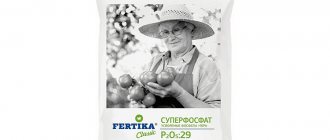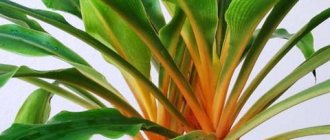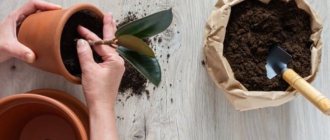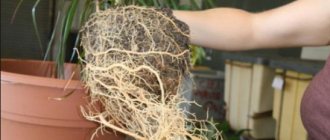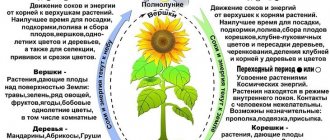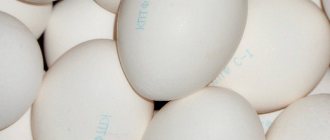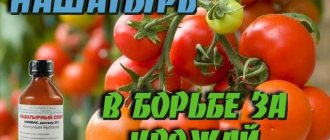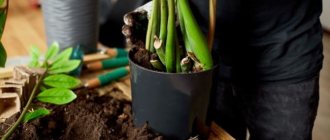Updated: 04/22/2021 16:44:20
Expert: Nikolay Alexandrovich
*Review of the best according to the editors of expertology.ru. About the selection criteria. This material is subjective in nature, does not constitute advertising and does not serve as a purchase guide. Before purchasing, consultation with a specialist is required.
Fertilizers for flowers have a beneficial effect on the growth and development of the plant. The substances they contain increase the protective forces and allow the active growth of green mass. The main thing is to decide on the composition of the solution and familiarize yourself with the rules for adding the substance. The rating of the best flower fertilizers will help with this. For convenience, we have divided it into 3 categories depending on the type of mixture.
What are the types of fertilizers?
Grouping is carried out for various reasons.
Type of substance.
- Mineral;
- Organic;
- Universal (organomineral).
The Top Rating is based on this classification.
Release form.
- Powder;
- Granules;
- Liquids.
Florists often choose liquids. They are ready, easy to use, and can be watered and sprayed. But the price is more expensive than dry ones. In addition, experts recognize granular forms as the best, as they provide a slow, gradual supply of nutrients.
A review of products shows that manufacturers are experimenting and rare configurations are gradually appearing, for example, new products in the form of gels or lozenges.
Seasonality.
- For a certain season;
- All year round.
Action.
- Pest protection;
- Weed protection;
- Soil restoration;
- Strengthening immunity;
- Growth stimulation;
- Nutrition.
2022 fertilizer rating for flowering plants
When choosing mineral fertilizers, it is necessary to take into account the composition and acidity of the soil and additional addition of organic matter. Before purchasing, you should study the percentage of useful substances, dosage features and method of use.
"Rainbow Garden of Wonders"
The drug is made on the basis of vermicompost produced by earthworms. It is a universal remedy for flowers and shrubs; it is applied 2 weeks before buds begin to form, and again during active flowering. Contains nitrogen, potassium, humic compounds. Among the advantages are maintaining the plant’s immunity, protecting against bacterial infections and rot.
"Fertie Mix" from Giley
Inexpensive and high-quality fertilizers are produced in the form of a concentrate; they enrich the soil with B vitamins, phosphorus, nitrogen compounds and potassium. Suitable for tall house plants, garden flowers. But after watering, a sharp, specific smell may persist throughout the day.
"Nutrisol"
The fertilizer dissolves well in water and is applied under the roots of the bush. Contains basic mineral compounds, large amounts of iron and manganese. It is recommended to apply 2 times per season. Gives flowers a rich shade, prolongs flowering time, and is easy to dose.
"Fertika"
Can be used for root feeding and spraying of shrubs before flowering. Contains sulfur, potassium, phosphorus, copper, boron and molybdenum. Does not contain chlorine additives, does not stimulate the growth of green mass.
"Agricola"
Increases the intensity of budding by 25%, saturates with vitamins, microelements manganese, boron and zinc. Strengthens the root system, recommended for soil of any type and acidity level, available in the form of liquid or dry soil
Contains gibberellic acids, humates, polysaccharides, sodium and potassium. Prevents buds from drying out and increases their number by 20-30%. Suitable for spraying and root watering. Can be used for greenhouses and indoor flowers.
"Humisol"
Biological growth stimulator activates abundant flowering. Made on the basis of organic vermicompost, it protects flowers from diseases, rot, and is effective when sprayed in weak conditions.
Available in the form of concentrate, tablets and granules, it saturates the soil with humins, molybdenum, boron, copper and iron, and increases the level of magnesium and zinc. Recommended for roses, lilies, peonies and rhododendrons. Can be used only 1-2 times a season. High-quality fertilizing saturates the soil with useful substances, improves its composition, regulates acidity and alkaline composition. The fertilizers presented in the rating contain the main microelements necessary for plants during the flowering period, activate microflora, and protect against diseases.
Fertilizers for feeding indoor plants
All plants need nutrients - nitrogen, potassium and phosphorus, as well as various microelements (iron, copper, boron, manganese, sulfur, etc.). Thanks to these substances, the full growth and flowering of crops is ensured, and their immunity is increased.
There are mono-nutrients for plants that contain only one nutrient element (for example, nitrogen or phosphorus) or a complex of them (complex fertilizers). If you buy a ready-made product, always pay attention to the ratio of nitrogen, phosphorus and potassium (NPK) in its composition - for example, for flowering plants, a fertilizer with a predominance of phosphorus and potassium is more suitable, and young growing crops need more nitrogen. Universal fertilizers are also produced, in which all three components are balanced; these can be used in all situations.
Mineral fertilizers need to be used throughout the season, usually from spring to autumn, changing only their dosage.
The appearance of the leaves and stems (excessive growth or slowdown in the formation of green mass, brown or light spots on the leaves, thinning or curvature of shoots, flying leaves, etc.) will tell you that the plant is missing some element or has it in excess. .). You shouldn’t let the plant become exhausted; it’s better to feed it regularly, at least in small quantities. But sometimes an excess of nutrients can be even more dangerous than a deficiency, so you need to be very careful about “feeding” the plants.
In any case, it is better not to engage in “amateur activities” and not to select “nutrition” for each plant by eye, but to buy a ready-made, balanced preparation from a trusted manufacturer.
Such mineral fertilizers for potted flowers are usually produced in liquid and dry forms (granules, powder, tablets, capsules and sticks). Of course, it’s worth looking for products labeled “chlorine-free” and “nitrate-free.”
Where can you choose such an effective, universal and safe complex fertilizer suitable for absolutely all indoor plants? For example, in, which offers just such a fertilizer - a series of Agricola fertilizers. Why her?
Due to a number of advantages:
- High efficiency . Agricola fertilizers are absorbed by the plant without loss. Fertilizing gives plants a powerful growth impulse. For flowering species – promotes intense and long-lasting flowering. Flowers and ornamental plants develop better, bloom more luxuriantly and longer, and delight with their fresh, bright colors.
- Optimal composition . Each group of cultures needs its own “diet”. For example, cacti need more phosphorus, decorative leaves need more nitrogen, flowering plants need more potassium. Agricola fertilizers take into account these plant characteristics. In addition to basic nutrients, they contain microelements in chelated form, which are easily absorbed by plants.
- Complex action . These fertilizers ensure better absorption of microelements, stimulate plant growth, and strengthen the immune system. Fertilizing with Agricola promotes the rapid restoration of crops damaged by diseases, pests, drought and other unfavorable factors.
- Ecological cleanliness . Agricola fertilizers do not contain heavy metals, chlorine and other harmful substances. The use of these fertilizers maintains soil acidity that is optimal for plants.
- Economical . Agricola fertilizers have a high concentration of nutrients and are therefore very economical. Consumption rates are 2-2.5 g per 1 liter of water for dry fertilizers and 5-10 ml per 1 liter for liquid Agricola fertilizers.
- Excellent solubility . Unlike conventional fertilizers, Agricola fertilizers are formulated in such a way that they provide excellent solubility in water.
- Two methods of feeding . Agricola fertilizers can be applied in two ways. The first is watering the plants with a fertilizer solution (root feeding). The second method is spraying the leaves (foliar feeding). When sprayed, nutrients are absorbed by the plant five times faster than when absorbed from the soil. This makes it possible to quickly feed a plant exposed to unfavorable conditions.
Organic
Granulated wood ash "Vitaflor"
Ash is a valuable remedy, a natural source of magnesium, sodium, calcium, phosphorus, and potassium. Strengthens productivity, immunity, protects any crops from diseases, and brings weakened plants back to life. Flowers take root better, produce large buds, and delight with intense color and aroma for a long time. It is important to consider the type of soil and variety; for example, violets require a minimum of ash. The modern form of release in granules does not generate dust, does not wash out, releases nutrients gradually and over a long period of time, and does not dramatically change the characteristics of the soil. Weight 1 kg. How much does it cost: plastic liter bucket - 140 rubles.
Advantages:
- Natural material for feeding;
- Ease of use;
- Gradual saturation;
- Strengthening the immune system.
Flaws:
- Not detected.
Organic dry fertilizer “Chicken manure” Fasco
Russian-made Fasco products receive numerous positive reviews. Chicken manure is a classic for increasing yields and flowering, as well as providing soil restoration. The manufacturer dried the natural material and granulated it while preserving the nutrients. This form guarantees environmental safety, does not contain pathogenic microflora, does not have a strong odor, and does not change characteristics during long-term storage. Packaging in bags from 0.8 to 3.5 kg.
Advantages:
- Harmless natural composition;
- No smell;
- Improvement of all types of soils;
- Improving the decorative qualities of the plant;
- Prolonged action;
- Ease of use and storage.
Flaws:
- Not detected.
Concentrated horse manure "Soft power"
A time-tested product for caring for plants. Contains elements that stimulate the vegetative process, necessary for optimal flowering. The manufacturer uses the fermentation method at a temperature of 43-56 degrees. The resulting concentrate is used in various ways, step-by-step instructions on the packaging. After vigorous shaking, dilute with water. The ratio for flowers is 1 to 20. Then you can soak the seeds, spray, water. In open ground or indoors. More often in summer, less often in winter.
Advantages:
- Natural, environmentally friendly;
- Economical consumption;
- All-season;
- Variety of applications.
Flaws:
- Not detected.
Pine bark UltraEffect Deco
Gardeners actively use pine bark chips in their summer cottages to protect flowers from frost or drought. In addition, the flowerbed looks well-groomed and decorative. For indoor flowers, the bark is used to create a substrate. Roses and orchids respond more gratefully than others. Mulch decomposes over time, leaving no harmful waste. Serves for several years. Contains fungicides that protect against insects. Varies in particle sizes. A 1.2 liter bag with pieces from 10 to 30 mm costs 120 rubles. Size 35-70 mm – 180 rubles.
Advantages:
- Without harmful substances;
- Prolonged effect;
- With decoration function.
Flaws:
- Expensive on large areas.
Dry water-soluble granules Agricola
Dry water-soluble fertilizers Agricola contain a full range of macro- and microelements. This is everything you need to get maximum results when growing flowers and ornamental plants in the garden and at home.
One of the important properties of fertilizing is 100% solubility. The fertilizer dissolves quickly and completely in water and has no sediment.
Agricola dry fertilizers are very economical, their consumption rate is 2-2.5 g per 1 liter of water. And the shelf life of Agricola dry fertilizers is unlimited!
Universal (organomineral)
"Ecofus" based on algae
A unique organomineral fertilizer that works due to the power of seaweed. Includes more than forty active nutrients, trace elements, amino acids, vitamins, enzymes, and natural antibiotics. Properties: immunostimulating, antiviral, antibacterial, fungicidal. Helps plants breathe, metabolize, and produce large, strong flowers. Improves soil structure and breathability. The manufacturer recommends a combination of spraying and watering.
Advantages:
- Super useful components;
- Increasing soil fertility;
- Flowering stimulator.
Flaws:
- Not detected.
Gumi-Omi Potassium Potassium Sulfate
The fertilizer produced by OZHZ Kuznetsov is a heterogeneous mixture consisting of powder, granules and agglomerates. As can be seen from the NPK indicators (0.5:1.25:30), it contains a lot of potassium. In addition, it contains humic acids, macro and micro elements, as well as 6% organic compounds. Potassium deficiency is visible in the appearance of the leaves; the edges turn yellow and become covered with “rusty” spots. Potash fertilizers are especially effective in peat and sandy areas. This is a popular group of fertilizers, not only for flowers. Customer reviews indicate that with the addition of Gumi-Omi, the plant comes to life, looks healthy, and delights with long-term flowering or a bountiful harvest.
Advantages:
- Universality, for all plants;
- Composition two in one: organics and minerals;
- Soil restoration;
- Visible effect.
Flaws:
- Not detected.
Miracle spray “Flower Paradise” Bui fertilizers
Liquid complex composition for the care of plants, decorative foliage and flowering plants. Suitable for indoor flowers and those growing in the garden or country house. NPK 0.23:0.23:0.34, as well as magnesium, iron, zinc and other trace elements. On the packaging there are tips on the amount of application: from March to September 1 time per week, from October to February 1 time per month. Customer reviews are the best: the effect is visible after a couple of days, it stimulates the compaction of leaves, the development of buds, and lush flowering.
Advantages:
- Ready-to-use solution;
- Independence from the season;
- Quick results;
- Economical consumption.
Flaws:
- Not detected.
IRIS OHYAMA INC Japanese Green Universal Fertilizer
The functionality of the Japanese-made product is striking in its diversity: it protects against excess moisture, aridity, and frost; increases resistance to pests and diseases; stimulates growth and root formation; guarantees abundant, long-lasting flowering. Designed for flowers, potted and decorative foliage crops. Formula of nitrogen, phosphorus, potassium, magnesium, copper, iron, zinc and other elements. Manufacturer's recommendations for use: for intensive healing, insert the bottle into the pot at an angle of 45 degrees. Another way: dilute 8 drops per 5 liters of water for large areas and healthy plants. According to buyers, spraying is no less effective.
Advantages:
- Balanced composition;
- Variety of applications;
- Visible performance;
- Wide range of effects.
Flaws:
- Not detected.
Liquid fertilizers for indoor plants Agricola-Aqua
Agricola-Aqua concentrated liquid fertilizers are both a fertilizer and a growth stimulator at the same time. They contain basic nutrients (nitrogen, phosphorus and potassium), microelements in a special chelate form and humic biologically active substances - energens. They increase the energy of plant cells, enhance the digestibility of nutrients, mobilize the immune system, and also increase plant resistance to adverse factors.
Agricola-Aqua fertilizers are used for both root and foliar feeding of flower crops. They give excellent results for indoor, balcony, greenhouse, garden flowers and ornamental plants. Agricola-Aqua fertilizers are economical. At a dilution rate of 5-10 ml of fertilizer per 1 liter of water, a 250 ml bottle is enough to obtain 25-50 liters of fertilizing solution.
Agricola-Aqua against yellowing of leaves (a complex of microelements) prevents premature yellowing of leaf blades. Fertilizer increases the resistance of plants to unfavorable factors, such as drying out of the soil coma, waterlogging of the soil, increased dry air, etc. Protects plants from the appearance of chlorosis and other non-infectious diseases caused by a lack of microelements.
